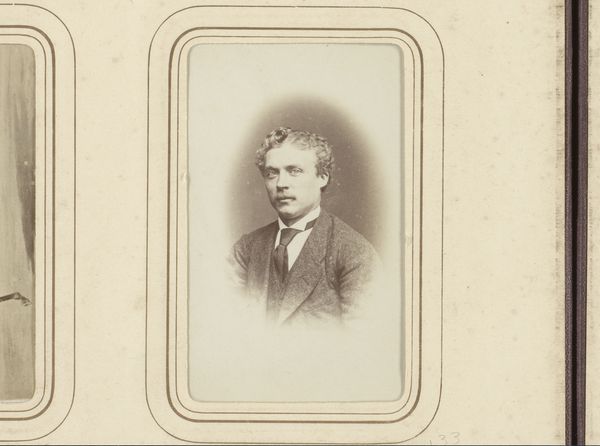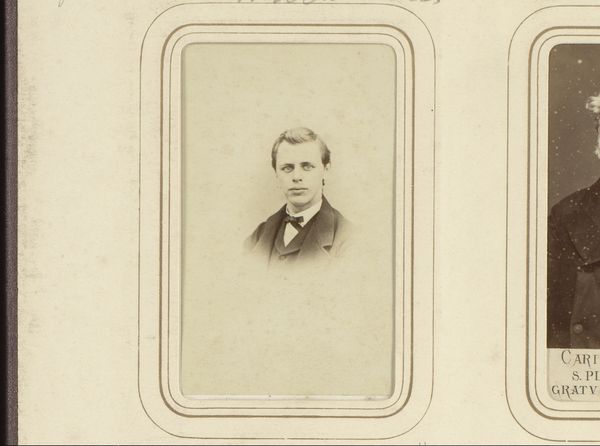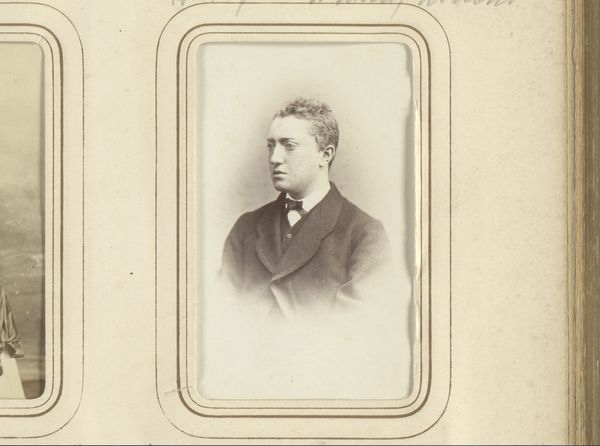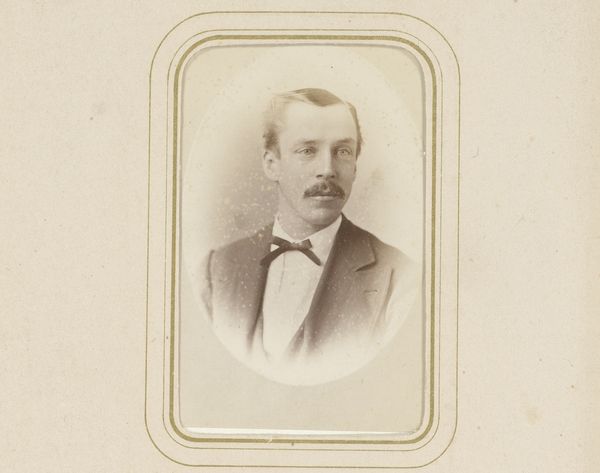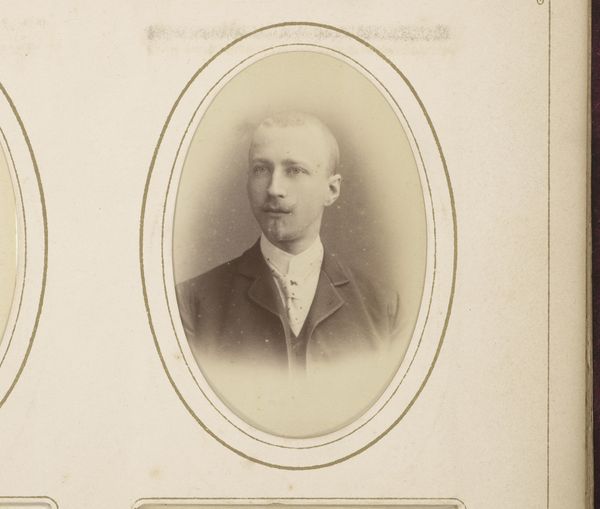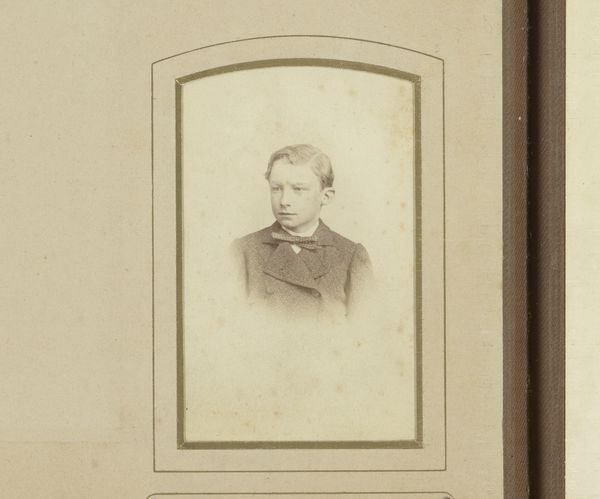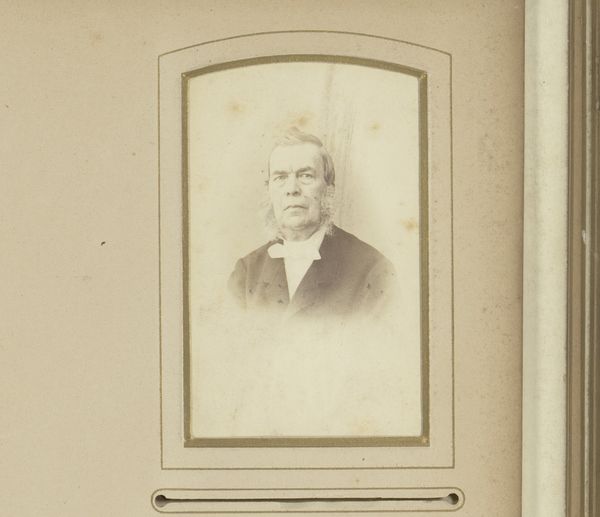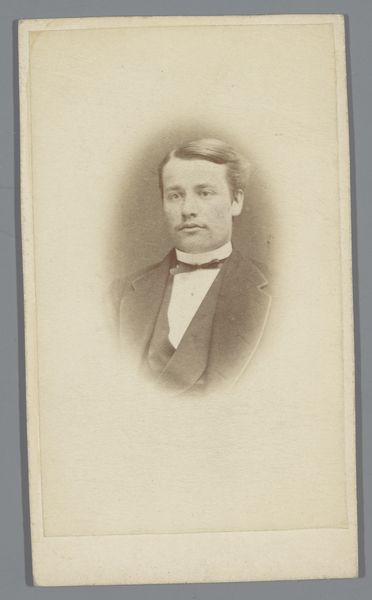
photography, albumen-print
#
portrait
#
photography
#
albumen-print
Dimensions: height 84 mm, width 51 mm
Copyright: Rijks Museum: Open Domain
Curator: Looking at this unassuming yet striking piece, we have here "Portret van een man" – Portrait of a Man. This albumen print photograph is estimated to have been created between 1865 and 1890 by Albert Greiner and is currently held at the Rijksmuseum. Editor: The fading sepia tones immediately give a sense of delicate fragility. He's so neatly composed, but there is a certain melancholy in his eyes. Almost like he is posing as he thinks he should look, rather than fully embodying his own persona. Curator: The format, albumen print, was quite popular at the time. These small-format photographs were often kept in albums and were a burgeoning trend, documenting family members and notable figures alike. Note the very clean composition, the sharp focus on the sitter’s face, and the relatively blank background. Editor: And he seems very self aware to have some standing in his community. Look at his clothing, the neatly tied bow tie and his close fitting coat. A symbol of social status, perhaps a rising professional keen to broadcast the symbols of aspiration? Curator: Precisely! Photography provided an affordable way for the emerging middle class to participate in portraiture, historically a privilege of the elite. He is portraying that image in the photograph of the upwardly mobile citizen. The man wanted to signal respectability and civic participation to all those viewing him in society. Editor: And there's the symbolism of the fading image itself. A reminder of mortality, or the passage of time. Even then, the portrait had a bittersweet resonance and a touch of nostalgia built into the visual and material construction. Perhaps this picture has special familial meaning with deep and hidden importance to someone. Curator: It’s important to remember that this photograph represents more than just the sitter. It represents shifts in social standing of the time and the public’s relationship with art and its affordability to middle class families. It demonstrates the democratization of imagery itself. Editor: What really gets me is this inherent, poignant awareness of memory and its inevitable fading in material. This sense is layered upon even back then due to the media and process it was captured with. It's just fascinating how this man chose to be seen, what was he feeling and what does this image carry forward from all of us that see him even now? Curator: Indeed. This portrait, like so many others of the era, offers us a glimpse into a specific moment in history, not only the life of the man portrayed, but also the society that shaped him and gave him the possibility to display himself in this manner.
Comments
No comments
Be the first to comment and join the conversation on the ultimate creative platform.
